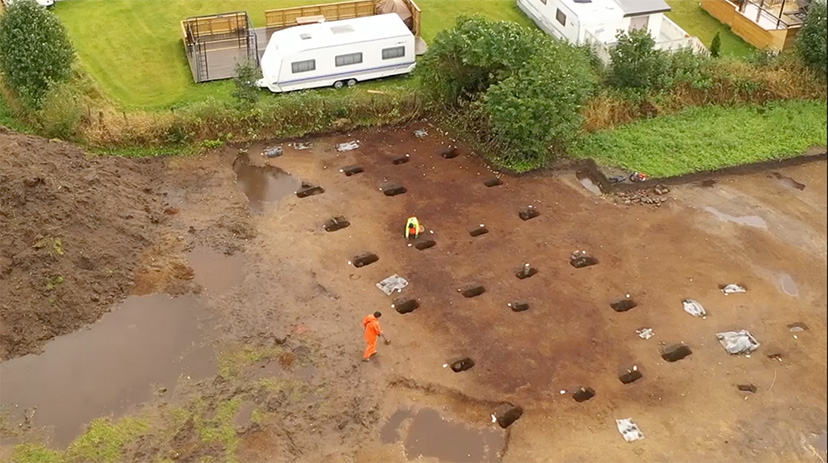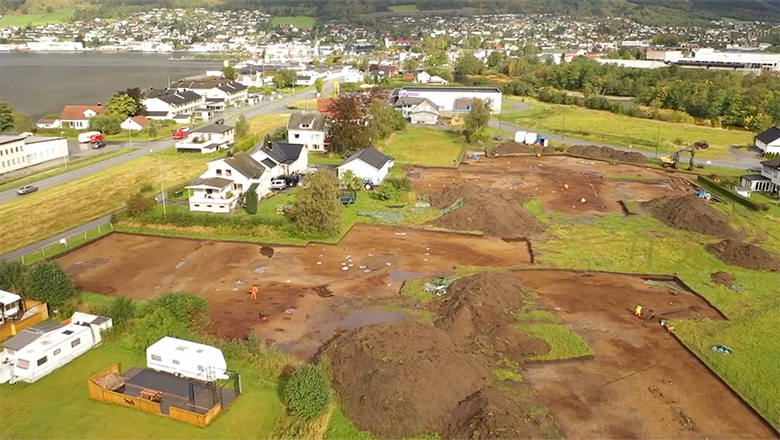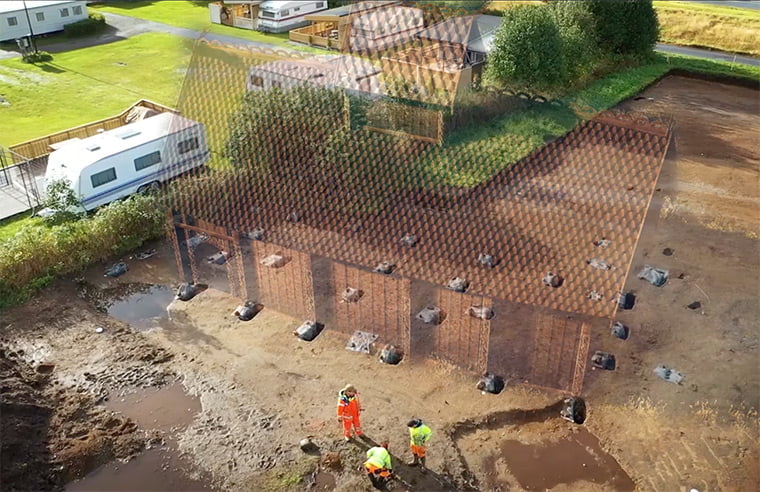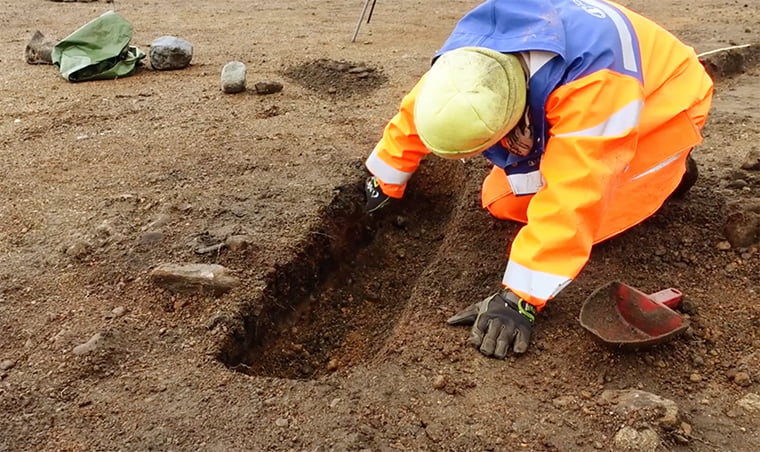
Archaeologists in Norway were stunned to find traces of a pagan temple, likely to date from the Viking Age. Never before has such a discovery been made in Norway.
Archaeological discoveries in Norway are nothing new, but this one is truly special.
Many signs of pagan worship have been discovered over the years but usually in the form of objects. Now for the first time, firm traces of a house of worship have been found in Norway.
A historic settlement in western Norway
In recent weeks, archaeologists from the University Museum of Bergen have worked on an excavation of approximately 8,000 square metres at Ose farm in Ørsta, western Norway. Located just south of Ålesund, Ørsta municipality borders the Hjørundfjord.

A large area of ground has been excavated, revealing traces of an Iron Age settlement, including several longhouses.
However, the most truly spectacular discovery is a building at the western end of the site. The 14m x 7m building is supported by sturdy wall posts, showing a bow-walled structure with a rounded end.
The interior of the building lacks the typical double rows of roof-supporting posts in its construction, commonly observed in the contemporary three-aisled longhouses. Instead, the inner centre is comprised of four large posts situated 3 x 3.5 meters apart.

A striking similarity
There are just a handful of buildings with almost identical construction characteristics from the Late Iron Age in Scandinavia. These include the pagan temple sites Uppåkra in Southern Sweden and Tissø in Denmark.
While the Ose settlement is much smaller than those, this building must also be interpreted as a pagan temple, say archaeologists.
“It is a fantastic discovery,” researcher and field archaeologist Søren Diinhoff from Bergen University Museum told NRK. He is an expert on Norse buildings and has taken a prominent role in the excavation project.

“It is unique in the Norwegian context. Throughout Scandinavia, traces of only a handful of such buildings have previously been found. We actually had to look at it for several days before we dared to believe what we saw,” added Diinhoff.
Diinhoff also said they believed the site was used for large religious gatherings at the summer and winter solstice, and that “sacrifice to the gods has clearly happened here.”
A ritual Norse sacrificial feast probably involved the blood of sacrificed animals splashed over walls, statues of gods and participants.
Faith in the Viking Age
Viking culture is intertwined with stories of the Norse Gods. Yet it was also the travelling northmen that began the introduction of Christianity to Norway.
Beginning more than 1,200 years ago, the Viking Age was a time of religious change across Scandinavia. The story is long, complex yet fascinating. It's also full of questionable facts.
For example, most researchers now dismiss the depiction of the earliest Vikings as Christian-hating pagans. While they did hold pagan beliefs, the Vikings' attacks on churches had nothing to do with religion. To the Viking, churches and monasteries were simply buildings full of riches, with weak defences.





This is a truly amazing find. I could only dream of seeing and walking through such a strong place of worship to the Norse
I would love to know what artifacts have been found to indicate that this is a temple and not just an atypical longhouse.
Or raised storage house.
Exactly
Everytime they find something unusual they clame it’s religious.
Were I live, if the find a person that have been killed (from the ironage ore bronzeage) they claim that it is a sacrifice…
I’ll think perhaps it was a criminal or something like that… or perhaps a sacrifice… but you’ll need proof to say someting like that… this norwegian house… very little proof…
I wonder how that place feels like. The idea of the splashing blood does not attract me that much. Athoungh I really wonder how it would feel and also have felt like to be present at such occasion. I know people do not always take this serious but in meditation or half trance I have sometimes experienced views in other times. Often it feels real powerful, I could also experience a complete different believe system. But the believe was 100%. Often it’s real fascinating. Often I long back to times like that. But I’m also happy with who I’m now, my today standards and believes .. so for me for sure there is an evolution there. Sometimes we loose more of our nature connection than is healthy.
I find it ridiculous this nonsensical speculation against ALL evidence that the Vikinger attacks on chrsitians had nothing to do with religion… When christians were genociding Polythestis because they were Polytheists, and that’s what they did with the Frisians and Redbad «who went to the Danes asking for help against them».
(((christians))) priests profoundly hated anything which was not aligned on abrahamic faiths and often destroyed sacred groves and temples… Pfff, this article is utterly pathetic and lying. There are surviving medieval texts of EVEN christian priests who were shocked how Carlus Magnus «which was allied with Khazaria and the Byzantine Empire (Khazaria was ruling the Byzantine Empire at that time)» soldiers were extremely brutal, raped, murdered and tortured where they passed.
After the attacks against the Polytheists, Animists and Pantheists «which was happening for more than 500 years by that time», a united Heathendom fought back «AND BEFORE that it wasn’t happening Vikinger attacks on France, England, Khazaria and elsewhere».
People will just believe in any lying (((academic))) will tell them.
in anything any lying (((academic)))*…